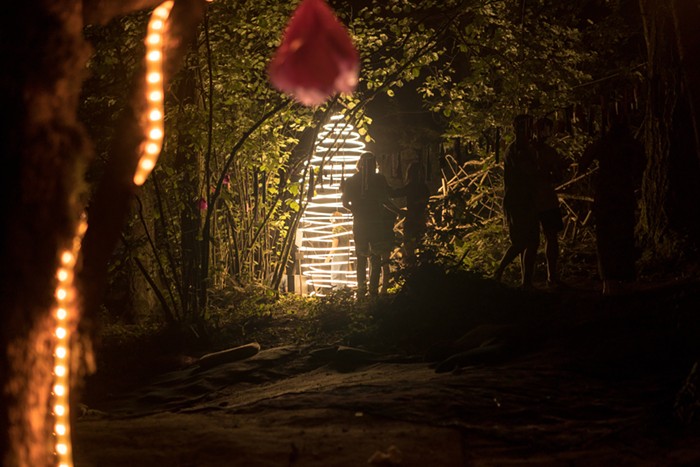When Ernst Kirchner outlined the mission of Die Brücke, an avant-garde group of artists founded in Dresden, Germany, he did so by making a woodcut print of its philosophy to accompany a 1906 exhibition. In its brief manifesto, he declared, "Everyone who reproduces that which drives us to directness and authenticity belongs to us." While that line seemingly speaks to the Romantic spirit that fueled the group's expressionist tendencies, it also suggests why the woodcut, a means of direct and authentic reproduction, was a preferred medium.
Based mostly on its own holdings, the Portland Art Museum has curated an impressive survey of German Expressionist prints, from woodcuts to far more sophisticated lithographs, that span from Die Brücke's inception in 1905 through the 1930s.
In an early example, Kirchner's "Old and Young Woman," his severe social commentary is carved deep into the wooden printing surface. As two women sit at a table, they are depicted in hard, rigid lines, and everything about the kitchen where they sit—inconsistent perspective and dimension—suggests that it's caving in on itself. The old woman's face is angular and so filled with deep-grooved wrinkles that it appears mask-like, revealing Die Brücke's obsession with Oceanic and African influences.
Later prints, though, are uniformly dominated by Germany's involvement in the war. Max Beckmann's "Aerial Bombardment" features the kind of agonizingly busy composition of his best canvases. As four people cling to each other, their heads peering into the sky to watch bombs fall from airplanes overhead, Beckmann conveys a palpable sense of panic through a collision of lines.
In George Grosz's lithographs, fat German military officers puff on cigars, their guts sagging, while Hausfraus bury their heads in their aprons, sobbing. There is less visual adventure in Grosz's work than in Die Brücke's, as if the war has left even the artists' imaginations ravaged and skeletal. But Grosz's images, which represent a kind of aesthetic of survival, are always scathing and laser-focused on the plight of the war, offering a compelling reminder of how terrible times can produce beautiful art.












